Of the Kan’ei Tsuuho, those minted before 1659 are called Ko-Kan’ei (old Kan’ei). There was a period of time after that when they were not minted, and those minted in 1668 or later are called shin kan-ei.
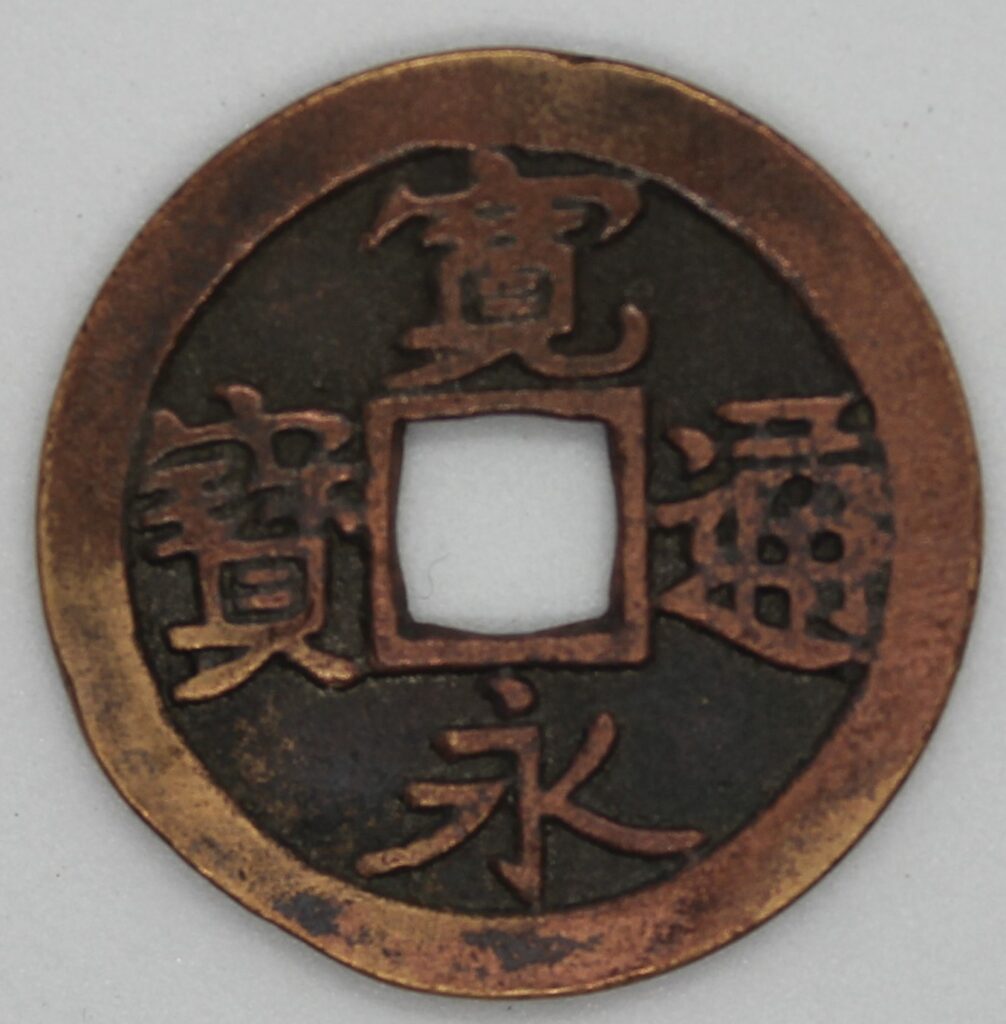
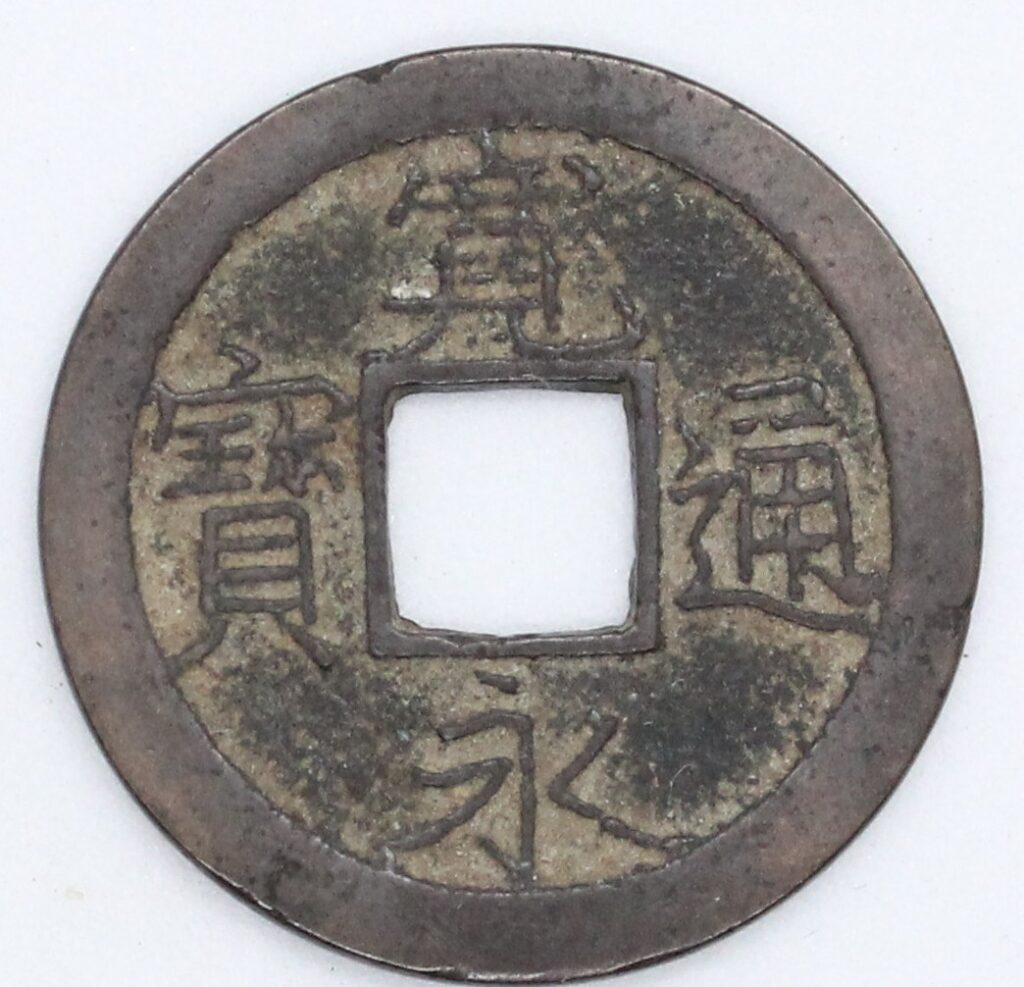
The manufacturing methods used for the Ko-kan’ei and the Shin-kan’ei differ, and there is also a clear difference in the typefaces of the senbun (characters on the coins).
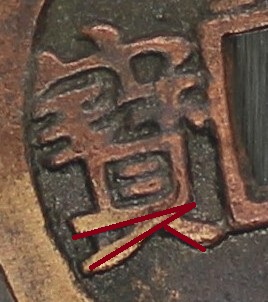
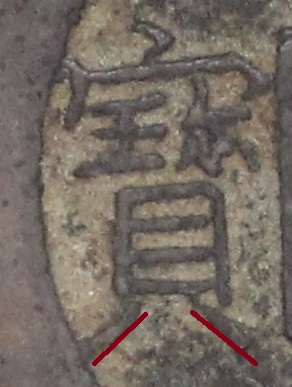
Specifically, of the Kanei Tsuho Copper 1-bun coins, the Ko-Kan’ei coins have the last three strokes of the character for “寳” (寳) in the form of a “ス” (su), while the Shin-Kan’ei coins have the last three strokes of the character for “寳” in the form of “ハ” (ha)
⇒For detailed classification of the Shin(new) Kan’ei Tsūhō coins, please click here.
Description of basic parts
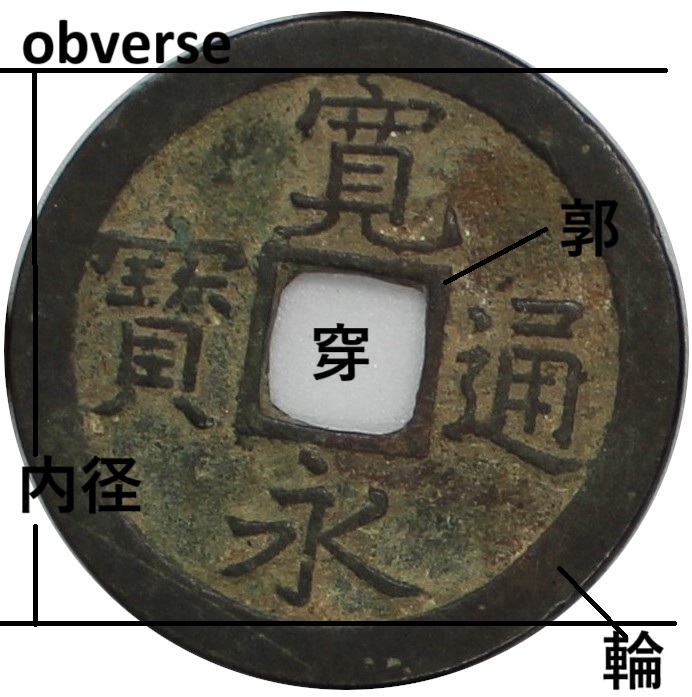
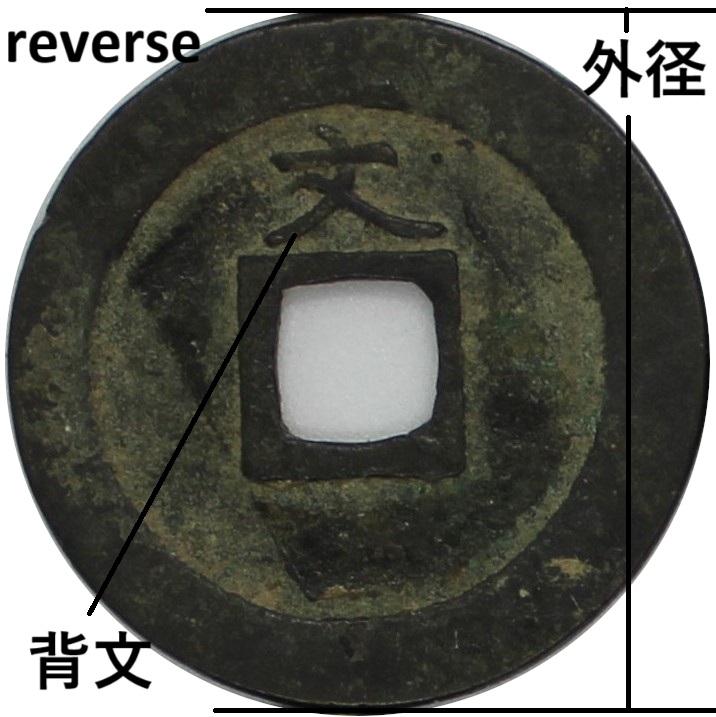
寛永通宝(Kan’ei Tsuuho)
寛(kan) 永(ei) 通(tsu) 寶(ho)
The name 寛永“Kan’ei” comes from the fact that it was first cast during the Kan’ei era (1624-1644).
通宝(tsu ho) means “world-class treasure” and refers to coins that are widely circulated in general circulation.
外径(gaikei) The “外径” is the diameter of the coin.
郭(kaku) The “郭” is the raised area around the hole in the center of the coin.
内径(naikei) The “内径” is the inner diameter of the coin.
輪(rin) The “輪” is the outer ring-shaped portion of the coin.
穿(sen) The “穿” is the hole in the center of the coin.
背文(haibun) The term “背文” refers to the “文” on the reverse side of the Kan’ei Tsuuho.
Basic explanation of the new Kan’ei Tsuho
The Kan’ei Tsuho is a coin that was issued for as long as 300 years. As a result, there is a wide variety depending on the time and place where they were produced.
The Kan’ei Tsuho is a representative coin of the Edo period in Japan and enjoys many collectors.
Classification is basically based on the typeface on the surface of the coin and the mint mark on the obverse.
In many Shin Kan’ei Tsuuho technical books, “背文” coins are listed first. The “背文” coins are placed in an introductory position. But for first-time collectors, this is the part of the coin that they find difficult to classify. Also, some coins range in value from as little as $1 to over $1,000.
Therefore, the act of collecting Kan’ei Tsuho is very interesting, and there are many coco collectors who dream of becoming rich.
We encourage you to try collecting coins.
At first, it would be a good idea to collect a series of coins with letters written on the reverse side of the coins. There are coins with various mint marks such as “元,” “佐,” and “小”.
Kanbun 寛文(era) Haibun 背文
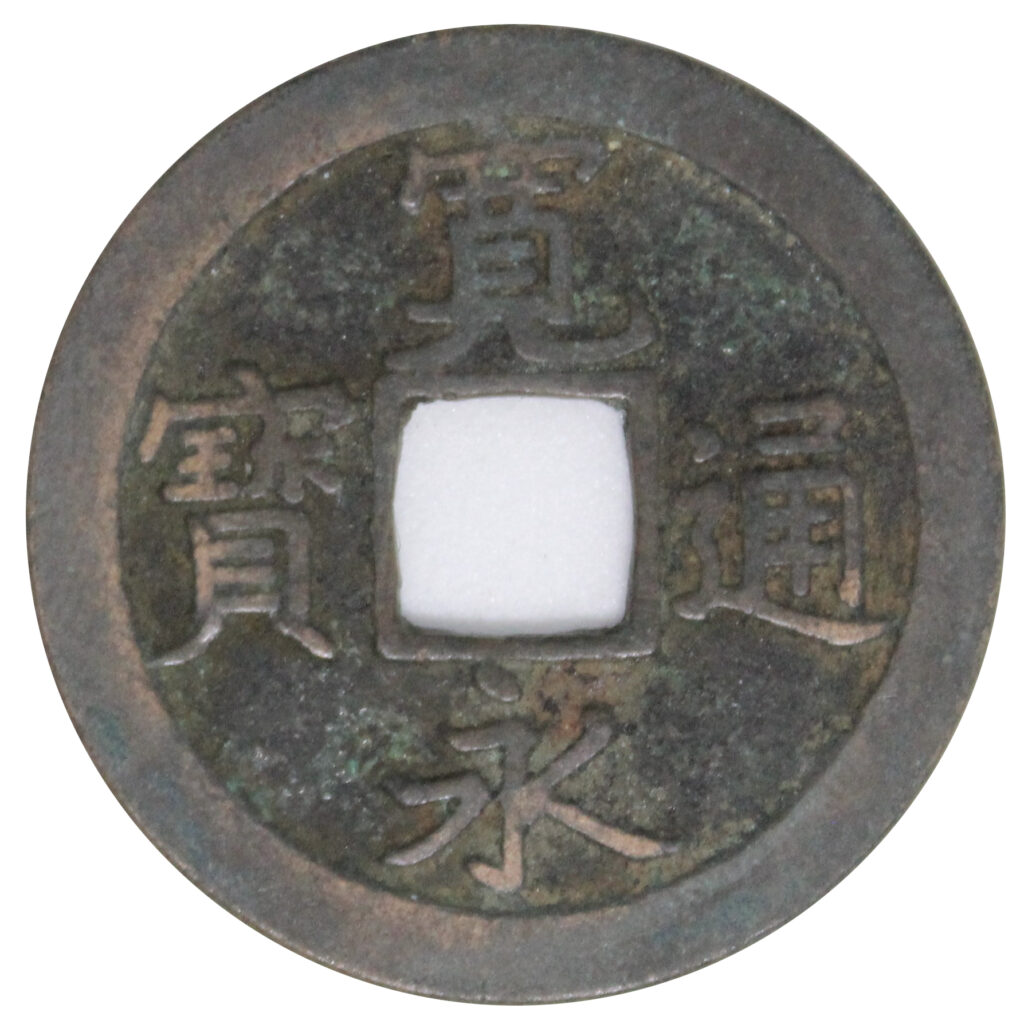
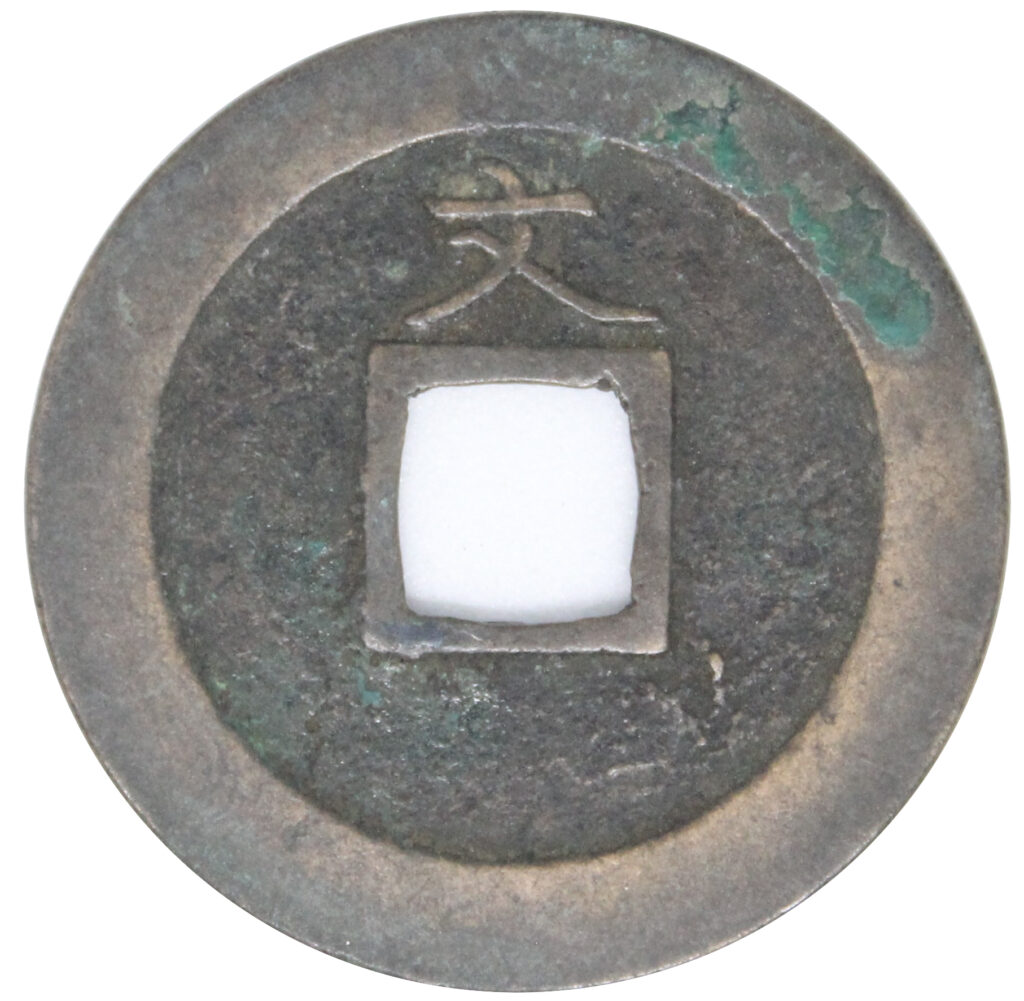
The “Kanbun (era) Haibun 背文” has the character for “Bun” written on the reverse side of the coin.
The character “Bun 文” is said to represent the original name of the Kanbun era. Together with the character “Kan 寛” on the coin’s surface, it is said to represent the era name “Kanbun寛文.
They are also commonly referred to as “Bun Sen 文銭”.
Among these, those with the basic typeface for classification are called “Seiji-Haibun正字背文”.
Some coins are very valuable depending on the difference in the typeface written on them.
There are also coins that have the same surface as the “Seiji-Haibun 正字背文” type but no lettering on the reverse side. Such coins are classified as “Seiji-Haibun Muhai 正字背文 無背.
Kanbun (era) ShimayaBun 島屋文
Shimaya Bun is a type of Kanei Tsūhō coin, characterized by the distinctive style of the character “通” (tsū). Specifically, the upper right part of the character “通” is shaped like the katakana character ‘ユ’ (yu). There are also coins with the character “文” (bun) on the reverse side, which are considered to be particularly rare and valuable.
Genbun(era) Koume sen 小梅 銭
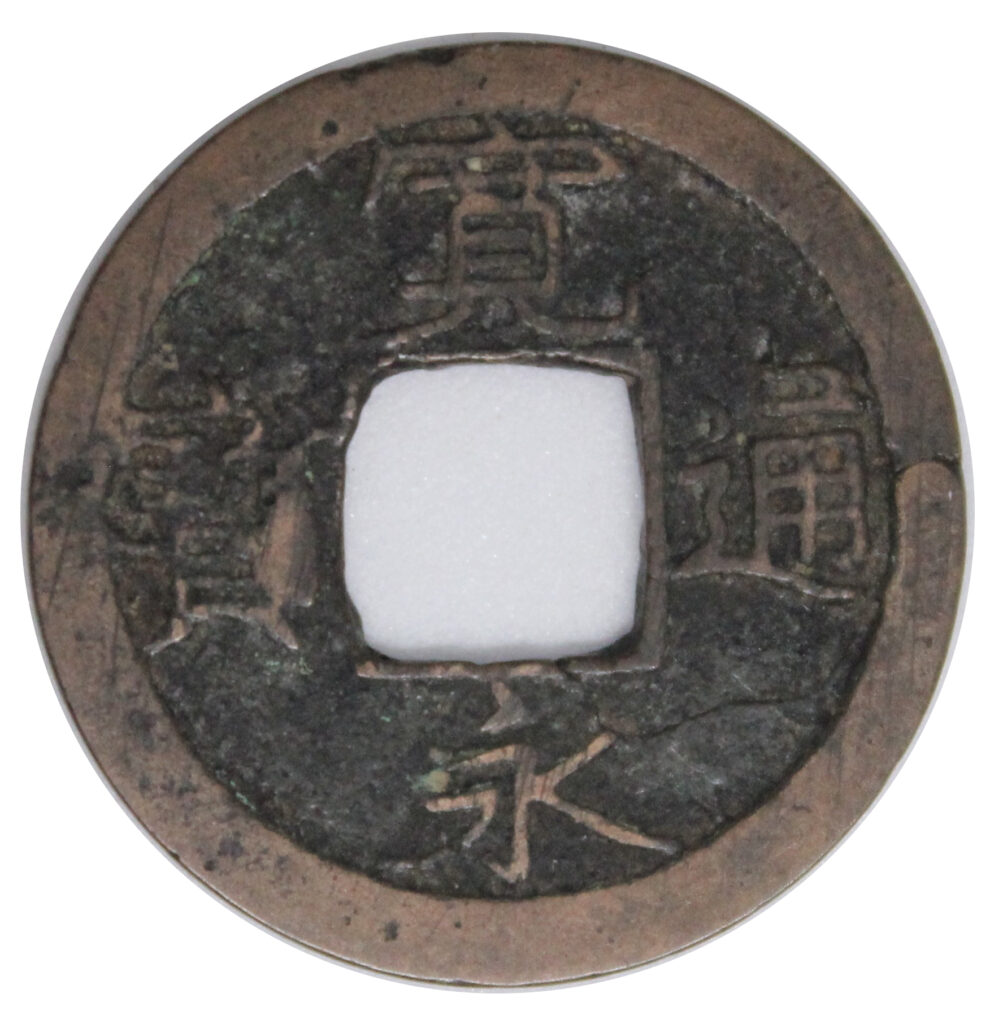
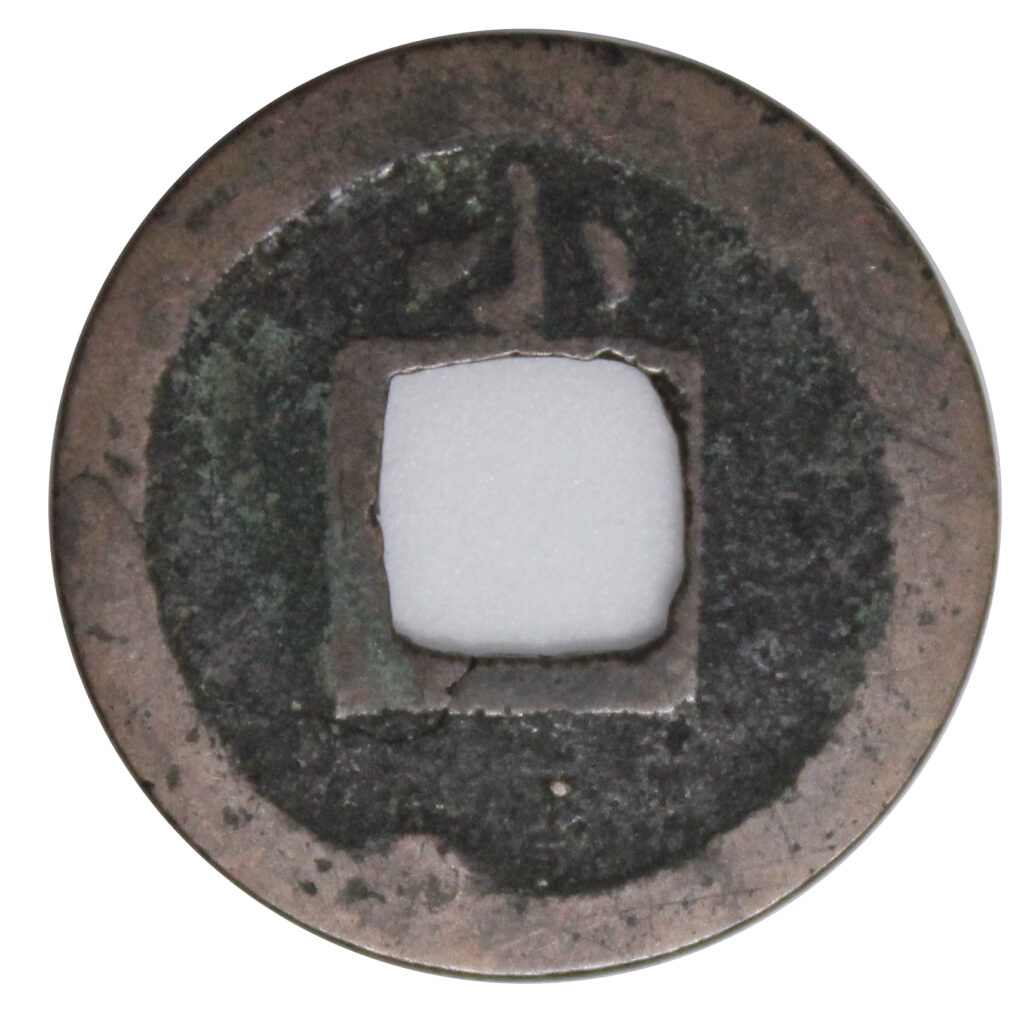
The Koume Sen is a Kan’ei Tsūhō coin from the late Edo period, believed to have been minted in Koume Village (now Sumida Ward, Tokyo) in Genbun era. The most distinctive feature of the Koume Sen is the clearly stamped character “小” on the reverse side. This character is thought to indicate Koume Village, the place of minting.
Kyōhō(era) Sendai Ishinomaki Sen 仙台 石ノ巻 銭
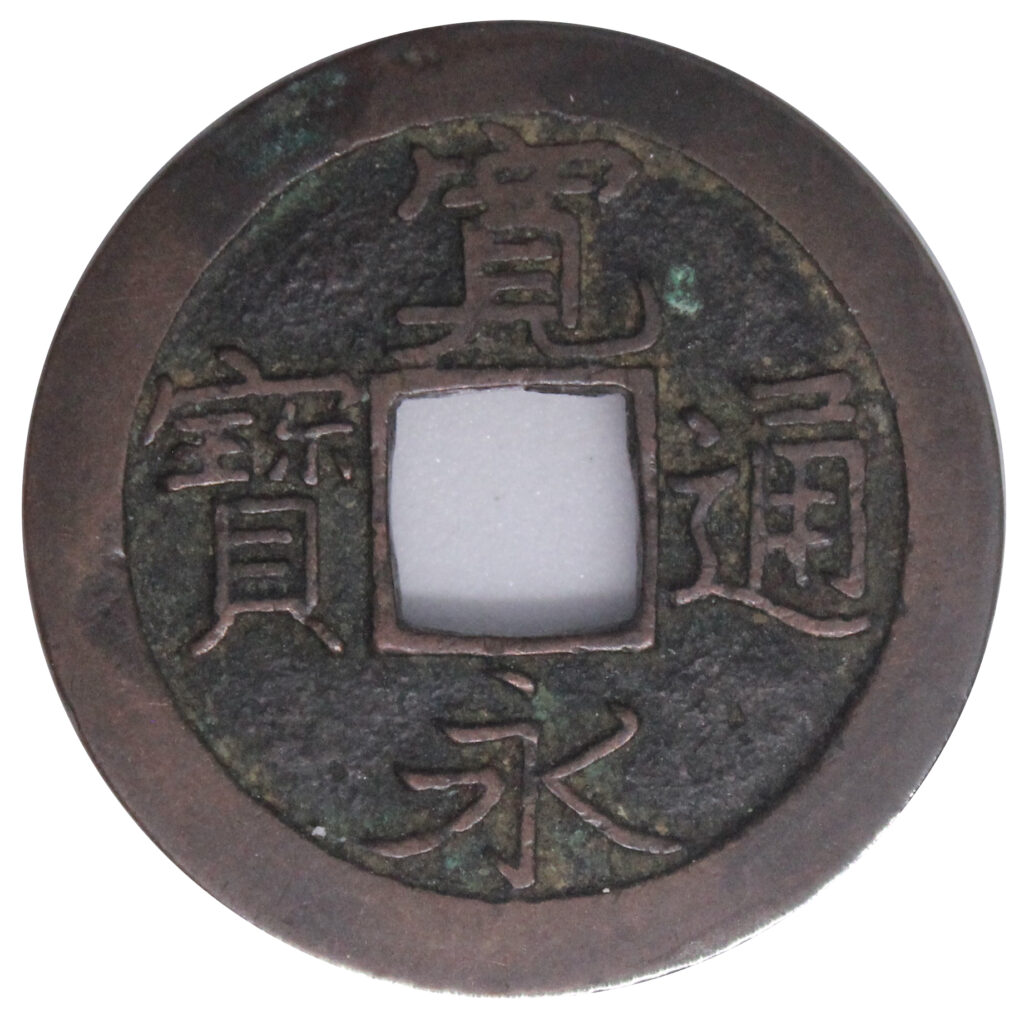
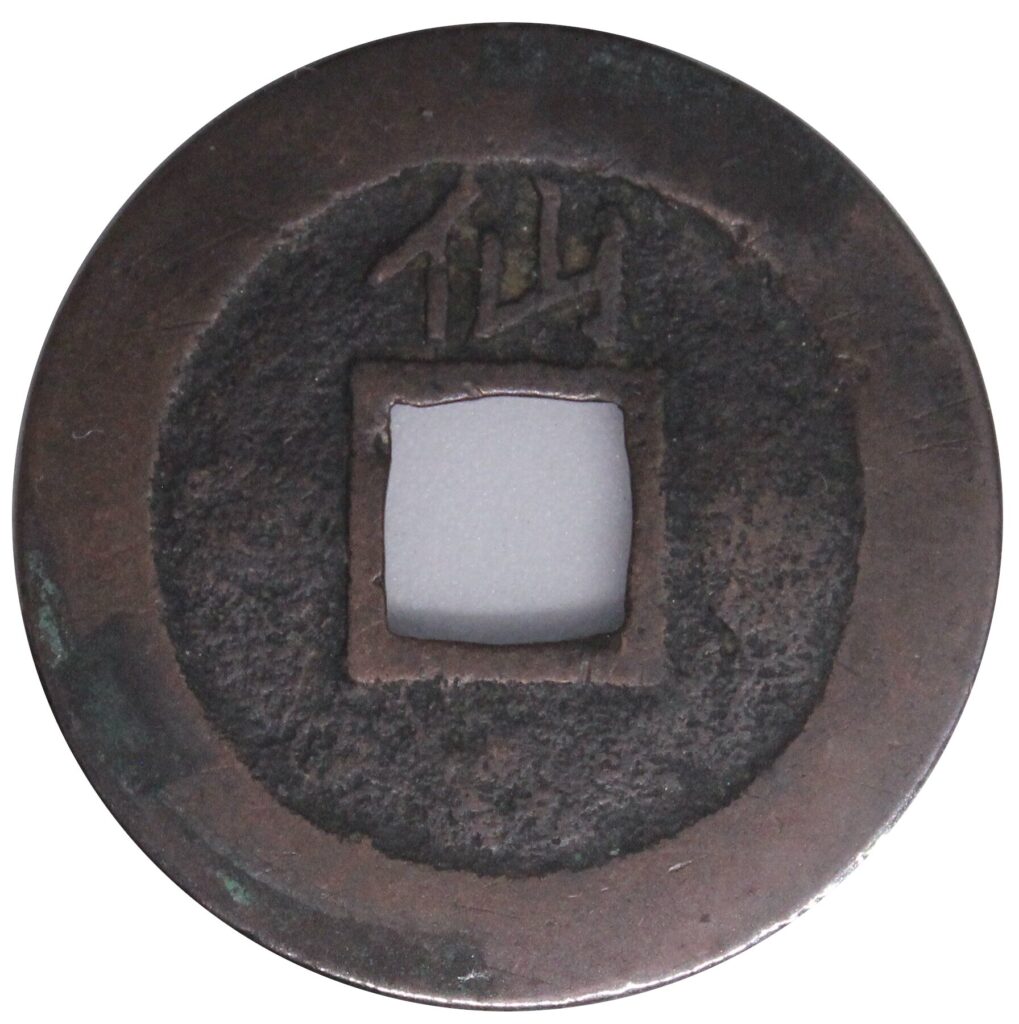
A typical Sendai Ishinomaki coin from the Kyōhō period has the character “仙” on the back.
The prevailing theory is that these coins were minted after 1728, but some argue that they were first minted during the Shōtoku period, so the details are unclear.
Coins from the Genbun period have the character “千” on the back. These coins were also made in Sendai.
